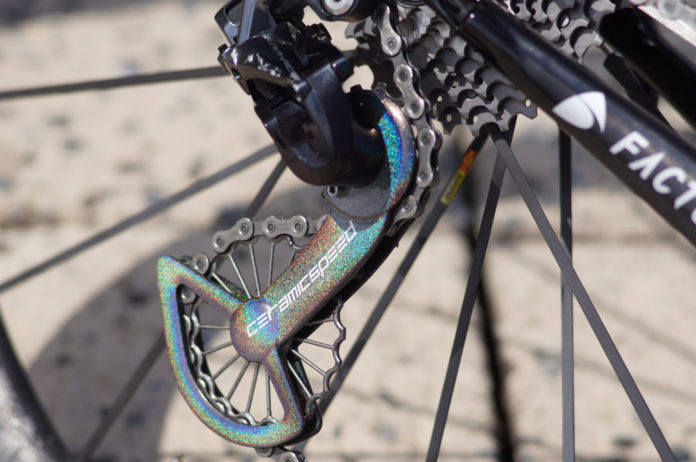Lightweighting remains a pivotal aspect in devices used in the mobility sector. When it comes to long-haul races, such requirement enables weight optimization while maintaining resiliency throughout the race. Danish Technological Institute (DTI) and CeramicSpeed collaborated on a project that highlighted the importance of such requirement in a device.
Researchers from DTI are continuously exploring new ways of leveraging new technologies in daily life. One of their well-known projects related to 3D printing was the Bocuse d’Or Competition. CeracmicSpeed on the other hand is a cycling company that takes races to the next level by taking advantage of ceramic bearings. Partnering with DTI enables them to utilize a quad-laser SLM®500 and twin SLM®280 system to manufacture pulley wheels. The results of this experience led to a light gear wheel, known as titanium pulley wheels.
“3D printing technology has given us a lot of leeway to experiment creatively with design, while at the same time being able to optimize a product’s function,” Carsten Ebbesen, R&D Manager at CeramicSpeed stated. “The collaboration with DTI has led us to develop and produce gears in a radically new design form that is only possible with 3D printing.”
Built in titanium on the SLM®500 metal additive manufacturing machine, the pulleys are equipped with 17 spokes with a diameter of 2 mm and a wall thickness of only 0,4 mm. Due to the hollow design, it has been possible to reduce the total weight of the sprocket to 8,4 grams. Thor Bramsen, Industrialization Manager at the Danish Technological Institute is enthusiastic about the possibilities of the SLM® technology: “The hollow geometry of the objects cannot be produced with conventional methods, and the 3D printing in combination with subsequent specialized processes leads to a unique innovative product.” Despite the complex geometry, DTI is able to reliably build the same quality parts in series production.
The gears produced with the selective laser melting process have also withstood rigorous tests to prove their quality. The pulley wheels are placed on the outer gears in the gearshift and are thus subject to wear. CeramicSpeed’s R&D department have been testing the wear on the printed titanium parts, which proved to be more durable and suitable for corrosion resistance and strength at low density than traditional aluminium parts.
To offer serial production of a high-quality, additively manufactured product, the entire process chain must be coordinated. This includes the robust, reliable, additive manufacturing machines from SLM Solutions, but the process begins with the component redesign for the additive process. The product design from CeramicSpeed was optimized by DTI for series production with additive manufacturing technology. This process is a delicate mix of not changing the customers design, while adding material for surfaces that require CNC machining, optimizing support, and minimizing wall thickness and weight. After successful production, the equally challenging, yet important post-processing steps take place, where the Danish Technological Institute uses its entire range of manufacturing knowledge, ensuring that only assembly is required when the finished product is delivered.
You can now post free of charge job opportunities in the AM Industry on 3D ADEPT Media. For further information about 3D Printing, follow us on our social networks and subscribe to our newsletter : Facebook, Twitter, LinkedIn & Instagram !Would you like to be featured in the next issue of our digital magazine? Send us an email at contact@3dadept.com






